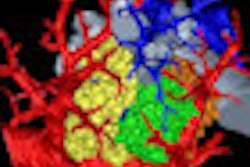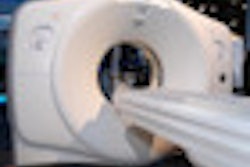Dear AuntMinnie Insider,
After 20 years of trudging the steep path to screening reimbursement for virtual colonoscopy, the technique's main clinical proponents are increasingly hopeful that their efforts will finally bear fruit -- though the timeline remains unclear.
At last month's International Symposium on Virtual Colonoscopy in Cambridge, MA, attendees spoke of the progress made with two organizations that will need to sign off on the technology -- the U.S. Centers for Medicare and Medicaid Services and the U.S. Preventive Services Task Force. Screening advocates believe that given the evidence provided in the past several years, there is nothing or very little left to demonstrate in terms of evidence of efficacy. Find out what else they said by clicking here.
For years, researchers have talked about the possibility of bundling virtual colonoscopy (also known as CT colonography or CTC) exams with other tests that roughly the same population of patients might benefit from. The idea is to use CTC to find not just colorectal polyps, but also other common health problems that plague older adults, with no additional imaging and at very little cost.
Osteoporosis screening is proving feasible, for example, and now researchers are working on another test that's already recommended for men: abdominal aortic aneurysm (AAA) screening. A study team from the University of Wisconsin documented the extracolonic findings of AAA in more than 1,000 patients undergoing screening CTC and followed the patients for five years. How accurate was CTC in predicting AAA problems down the road? Find out in this issue's Insider Exclusive.
Researchers writing in Gastroenterology are crediting colonoscopy screening reimbursement, granted in 2001, with substantial drops in colorectal cancer incidence. Considering that other studies have shown that increased application of virtual colonoscopy screening would have a similar effect, is it time to make more use of screening CTC in the more than 80 million adults at risk for the disease?
Ultralow-dose dual-source CTC with iterative reconstruction is generating the same image quality as standard prone/supine imaging at half the dose, according to a study from the Mayo Clinic. Find out more here.
Also of note, technologists stole the show in a study from Radiology, with two of them reading CTC studies as well as a single experienced radiologist in a story you'll find here. Necessity -- specifically a shortage of trained radiologists -- was the mother of this invention.
We invite you to scroll down through the links below for the rest of the news in our Virtual Colonoscopy Digital Community.




















